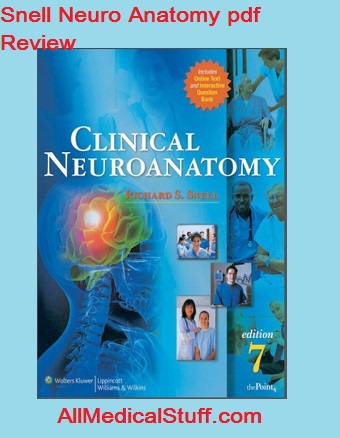Basic Clinical Neuroanatomy Young Pdf Converter
SummaryNeuroanatomy is the study of nervous system structures and how they relate to function. One focus of neuroanatomists is the macroscopic structures within the central and peripheral nervous systems, like the cortical folds on the surface of the brain. However, scientists in this field are also interested in the microscopic relationships between neurons and glia - the two major cell types of the nervous system.This video provides a brief overview of the history of neuroanatomical research, which dates back to the 4th century BC, when philosophers first proposed that the soul resides in the brain rather than the heart.

Basic Clinical Neuroscience 4th Edition
Key questions asked by neuroanatomists are also reviewed, including topics like the role cytoarchitecture, or the arrangement of neurons and glia, plays in brain function; and how neuroanatomy changes as a result of experience or disease. Next, some of the tools available to answer these questions, such as histology and magnetic resonance imaging, are described. Finally, the video provides several applications of neuroanatomical research, demonstrating how the field lives on in today’s neuroscience labs.
Through the study of neuroanatomy, scientists attempt to draw a map to navigate the complex system that controls our behavior. On the microscopic level, neuroanatomists investigate the relationships between signaling cells, known as neurons; maintenance cells, known as glia; and the extracellular matrix structure that support them. From a broader view, at the organ level, neuroanatomy examines brain structures and nerve pathways.This video will provide an overview of neuroanatomical research by introducing the history of the field, key questions asked by neuroanatomists, and the tools available to answer those questions, followed by a review of some specific experiments investigating neuroanatomy.
Building upon these impressive historical studies of nervous system structure at the microscopic and macroscopic levels, today’s neuroanatomists ask questions concerning how structure relates to function. To begin, some researchers focus specifically on cytoarchitecture, or the arrangement of neurons and glia. For example, to investigate specific nuclei, or neuron clusters in the brain, it is helpful to characterize the neuronal subtypes found there and the connections those cells make with other brain regions.Given that cytoarchitecture is dynamic, another key question in this field focuses on how and why neuroanatomical changes take place.For example, learning and memory are associated with “neuroplasticity,” or changes in neural pathways, like alterations in the structural contact points between neurons.
Small protrusions, called dendritic spines, can dynamically change in size, shape, and number in an activity-dependent manner.Understanding the structure of the nervous system is also pivotal to explaining its dysfunction.For instance, debilitating neurodegenerative diseases are associated with characteristic neuroanatomical changes, such as the degeneration of dopaminergic neurons observed in Parkinson’s disease. Having discussed the key questions that neuroanatomists ask, let’s review the tools these scientists use to find answers.First, histology, or the analysis of stained tissue slices, is an essential technique for studying cytoarchitecture.Neuroanatomists have a number of stains at their disposal to visualize specific structures in the nervous system.Histochemistry is a branch of histology based on the localization and identification of chemical components. One particularly valuable application of histochemistry is the detection of tracers: Molecules that are introduced into neurons to visualize their connections within the nervous system.As we mentioned previously, the advent of the microscope revolutionized the way that neuroanatomy was studied. The light microscope enables histologically-stained neuronal tissue to be imaged at up to a thousand times its original size, thereby revealing cytoarchitecture. Next, let’s review some applications of these methods.

Detailed information about brain structure can be obtained through analysis of preserved brains that are thinly sliced into sections. To highlight distinct structural features, these sections of primate brain were stained to show the expression of three proteins throughout the entire brain. Stained sections can also be studied at high magnification, allowing researchers to visualize structure at the cellular level.Experience can modify neuronal structure at the cellular level. Earth science tarbuck lutgens 12th edition.
In this experiment, young rats are exposed to tactile stimuli throughout development. When they reach adulthood, brain samples are collected and stained to visualize cell morphology. The resulting images reveal changes in the shape and number of dendrites, suggesting altered neuronal connectivity.Neuroanatomy is pivotal in clinical settings, as it contributes to diagnosis and treatment of neurological and psychiatric diseases.
For instance, changes in cytoarchitecture are tightly linked to certain disease states. Structural neuroimaging techniques are frequently combined with functional imaging to compare the activity of specific brain regions in normal and disease states. For instance, patients suffering from concussion exhibit changes in neural activity patterns, which correlate with their recovery from the injury.
Basic Clinical Neuroanatomy Young Pdf Converter Download
Clinically oriented and student-friendly, Basic Clinical Neuroscience provides the anatomic and pathophysiologic basis necessary to understand neurologic abnormalities.